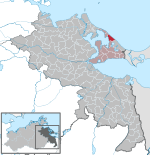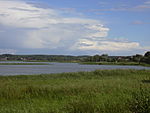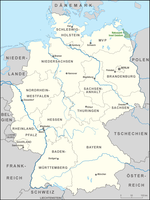North European Plain

The North European Plain (German: Norddeutsches Tiefland – North German Plain; Mitteleuropäische Tiefebene; Polish: Nizina Środkowoeuropejska – Central European Plain; Danish: Nordeuropæiske Lavland and Dutch: Noord-Europese Laagvlakte ; French : Plaine d'Europe du Nord) is a geomorphological region in Europe that covers all or parts of Belgium, the Netherlands (i.e. the Low Countries), Germany, Denmark, and Poland. It consists of the low plains between the Hercynian Europe (Central European Highlands) to the south and coastlines of the North Sea and the Baltic Sea to the north. These two seas are separated by the Jutland Peninsula (Denmark). The North European Plain is connected to the East European Plain, together forming the majority of the Great European Plain (European Plain).
Excerpt from the Wikipedia article North European Plain (License: CC BY-SA 3.0, Authors, Images).North European Plain
Küstengewässer einschließlich Anteil am Festlandsockel
Geographical coordinates (GPS) Address Nearby Places Show on map
Geographical coordinates (GPS)
| Latitude | Longitude |
|---|---|
| N 54 ° | E 14 ° |
Address
Küstengewässer einschließlich Anteil am Festlandsockel
18569 Küstengewässer einschließlich Anteil am Festlandsockel
Mecklenburg-Vorpommern, Germany
Open on Google Maps









